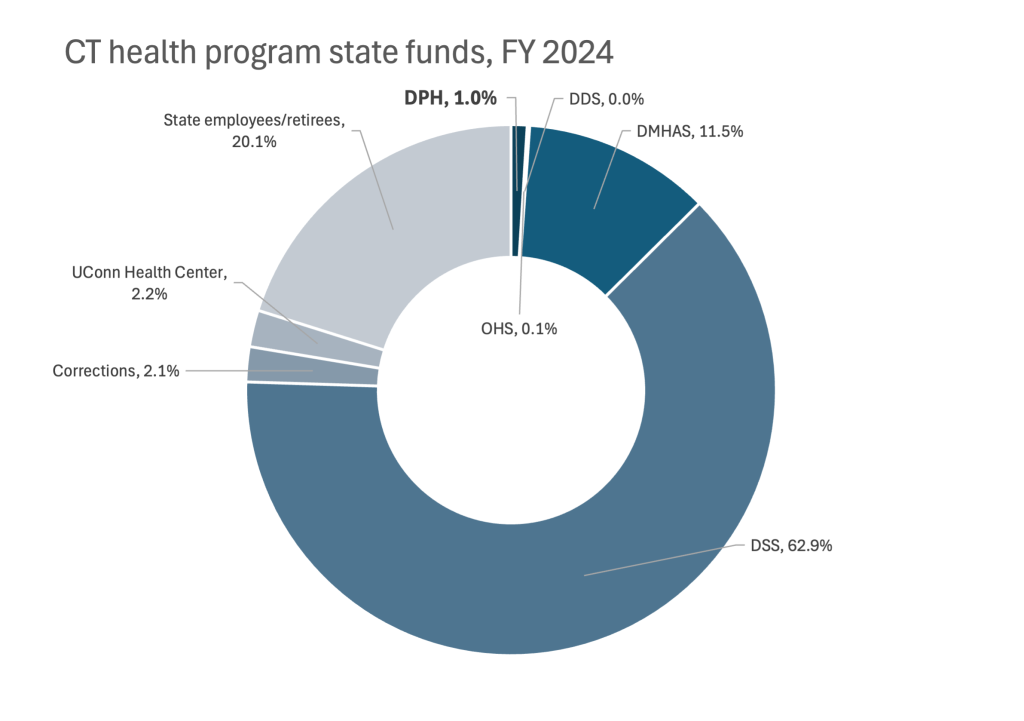CT is underfunding public health despite growing risks, Updated CT Public Health resource

Public health focuses on preventing health problems rather than the more costly treatment of patients when they are ill. Experts estimate that only 20% of our health outcomes are connected to clinical care services. Over the 20th Century, Americans’ life expectancy rose 62%. Those gains were largely due to effective public health initiatives.
More recently however, progress has stalled. Rates of chronic and infectious disease are growing. There is good evidence that state health policy makes an important difference in the health of state residents.
Investing in public health is smart, saving more lives for less money than other health interventions. But we aren’t spending enough in Connecticut to protect health.
Like the rest of the country, our state devoted a lot of money into public health to combat COVID, because we needed to. But we tend to forget about investing when times are good, paying the price next time for our usual neglect, panic, repeat cycle.
There is a great deal of research identifying public health interventions that improve health and lower total healthcare costs.
The neglect of public health funding has coincided with declines in life expectancy, rising health disparities, and the resurgence of diseases such as measles that we’d beaten in the past. Experts have called for annual investments of $4.5 billion at the federal and state levels to realize public health’s potential to improve health.
Connecticut spends only 1% of our state’s health budget on public health to improve the health of all 3.7 million state residents. We spend almost twice as much providing medical services for roughly 10,000 prison inmates.

Connecticut lags behind comparison states in per person state spending on public health, both in level of spending and over time. In 2023, we ranked 26th among states, behind Rhode Island, Massachusetts, New York, and New Jersey.

There is a great deal of research identifying public health interventions that are proven to improve health and lower total healthcare costs.
Connecticut’s public health system is facing very serious challenges. In addition to the rising rates of preventable illnesses and inadequate resources, there are new challenges threatening progress.
The Trump administration has implemented deep cuts in federal public health agencies and grants. About 20% of Health and Human Services agency staff have been laid off. The state has lost millions in public health grants. Local Connecticut health directors are making hard decisions including cutting vaccine clinics, infectious disease tracking, health education, and laying off staff. Over two thirds of Americans oppose the Trump administration’s cuts to health agencies.
Public health practitioners are facing more challenges getting their messages across. Trust in public health agencies, both federal and state, has eroded over time. COVID created challenges to trust in public health leaders, and that mistrust has persisted. Only about half of Americans trust national or local leaders or agencies. There is a significant political divide between Republicans and Democrats on who to trust. While most parents (82%) still keep their children up to date with vaccines, that number is down, especially among Republicans. It’s critical for public health leaders to assess and learn from COVID missteps.
Read more about the benefits of public health — how it can improve the length and quality of life, and lower healthcare costs. Visit our updated Public Health chapter in CT Healthcare Explained.

